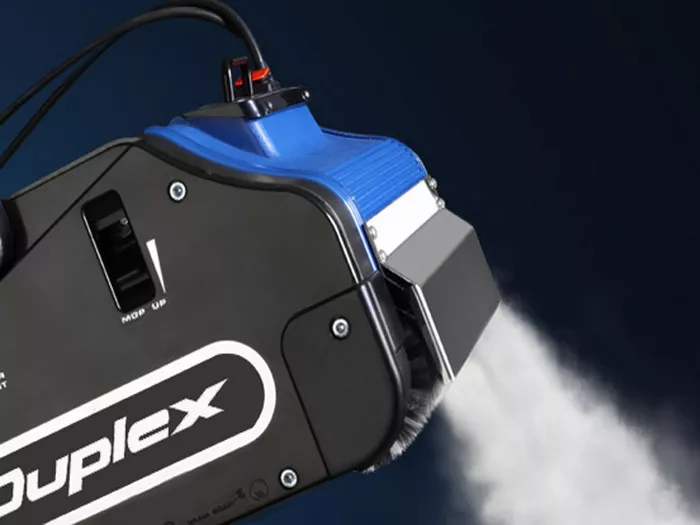In industrial settings, maintaining air quality is essential for the health of workers and the environment. One effective solution for controlling air pollution is the wet scrubber. This device plays a crucial role in removing harmful pollutants from exhaust gases before they are released into the atmosphere. This article will explore what a wet scrubber is, how it functions, and its various applications in different industries.
Understanding Wet Scrubbers
Definition of a Wet Scrubber
A wet scrubber is an air pollution control device that removes particles and gases from industrial exhaust streams. It does this by using a liquid to absorb or neutralize contaminants. The liquid is often water, but it can also include chemical solutions depending on the specific application and pollutants being targeted.
Types of Wet Scrubbers
There are several types of wet scrubbers, each designed for specific applications. The most common types include:
Venturi Scrubbers: These scrubbers use a high-velocity gas stream to create a vacuum that draws the liquid into the airstream. The rapid mixing allows for efficient gas and particulate removal.
Packed Bed Scrubbers: In these systems, the gas flows through a bed of packing material that is wet with the scrubbing liquid. The packing material increases the contact area between the gas and the liquid, improving pollutant removal efficiency.
Tray Scrubbers: These devices consist of multiple trays or plates through which the gas flows. Liquid is sprayed or flows over these trays, promoting contact between the gas and liquid.
How Wet Scrubbers Work
Basic Operation Principles
The operation of a wet scrubber relies on the principles of mass transfer and contact between the gas and the scrubbing liquid. The primary steps involved in the process are as follows:
Gas Inlet: Contaminated gas enters the scrubber through an inlet. The design of the inlet is crucial for ensuring efficient gas flow and minimizing pressure drops.
Liquid Injection: The scrubbing liquid is injected into the scrubber, either by spraying or flowing over packing material. This liquid creates a barrier that interacts with the incoming gas.
Contaminant Capture: As the gas passes through the scrubber, contaminants are either absorbed into the liquid or captured by droplets. This step is essential for reducing emissions.
Gas Outlet: After passing through the scrubber, the cleaned gas is released through an outlet. The efficiency of this step is critical for ensuring compliance with environmental regulations.
Liquid Recirculation: The scrubbing liquid, now containing the captured pollutants, is often recirculated within the system. Depending on the application, the liquid may need to be treated or replaced periodically.
Mechanisms of Contaminant Removal
Wet scrubbers utilize several mechanisms to remove pollutants from the gas stream. These mechanisms include:
Absorption: This process involves the transfer of gas-phase pollutants into the liquid phase. Contaminants dissolve in the liquid, effectively reducing their concentration in the gas.
Collection: Larger particulate matter is collected through inertial impaction or sedimentation. The larger particles are unable to follow the airstream’s curvature and collide with the liquid droplets, causing them to be trapped.
Chemical Reactions: In some cases, the scrubbing liquid contains chemicals that react with specific pollutants, converting them into less harmful substances. For example, alkaline solutions can neutralize acidic gases like sulfur dioxide.
Applications of Wet Scrubbers
Industrial Uses
Wet scrubbers are widely used in various industries to control air pollution. Some of the common applications include:
Chemical Manufacturing: In chemical plants, wet scrubbers are used to remove harmful vapors and dust generated during production processes. This helps maintain a safe working environment.
Power Generation: Power plants, especially those that burn fossil fuels, utilize wet scrubbers to reduce sulfur dioxide emissions. This is essential for complying with environmental regulations and protecting air quality.
Metal Processing: In metalworking industries, wet scrubbers help capture metal fumes and dust generated during processes like welding and machining. This protects workers and prevents environmental contamination.
Environmental Protection
Wet scrubbers also play a critical role in protecting the environment. By removing harmful pollutants from industrial emissions, these systems help reduce acid rain, smog, and respiratory issues caused by poor air quality. Compliance with environmental regulations is essential for industries to operate sustainably and responsibly.
Advantages of Wet Scrubbers
Wet scrubbers offer several advantages over other air pollution control devices:
High Efficiency: Wet scrubbers are effective at removing both gases and particulate matter. They can achieve high removal efficiencies, often above 90%.
Versatility: These systems can be designed to handle a wide range of pollutants, including acid gases, volatile organic compounds (VOCs), and particulate matter.
Lower Operational Costs: In many cases, wet scrubbers have lower operational and maintenance costs compared to dry scrubbers. The use of water as a scrubbing liquid can also make them more cost-effective.
see also: What is the Best Tile Floor Scrubber?
Challenges and Considerations
Maintenance Requirements
While wet scrubbers offer significant advantages, they also require regular maintenance. This maintenance includes monitoring the scrubbing liquid’s pH and chemical composition, inspecting for leaks, and cleaning the system to prevent fouling.
Liquid Disposal
Another challenge associated with wet scrubbers is the disposal of contaminated scrubbing liquid. Depending on the pollutants captured, this liquid may require treatment before disposal to prevent environmental harm.
Space Requirements
Wet scrubbers can occupy significant space, especially in large industrial facilities. Companies must consider the available space when designing and installing these systems.
Conclusion
Wet scrubbers are essential devices for controlling air pollution in various industrial applications. Their ability to remove harmful gases and particulate matter from exhaust streams plays a vital role in protecting both workers and the environment. Understanding how wet scrubbers work, their mechanisms of operation, and their applications is crucial for industries looking to comply with environmental regulations and promote sustainability.
Despite their challenges, such as maintenance requirements and disposal considerations, the benefits of wet scrubbers make them a valuable asset in the fight against air pollution. As industries continue to prioritize cleaner air and environmental responsibility, wet scrubbers will remain an important technology for achieving these goals.
Related topics:

